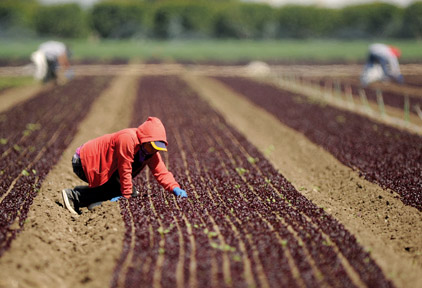Group releases annual list ranking produce for pesticide
residue
Some Hollister-area farmers are crying foul over a report by the
Environmental Working Group that highlights 12 fruits and
vegetables with the most pesticide residue on them.
The annual report deems the products as the
”
Dirty Dozen.
”
This year’s list, released this week, states that apples, celery
and strawberries have the most residue on them. In another list
– in the same
”
Shopper’s Guide to Pesticides
”
– the EWG has the
”
Clean 15
”
or the produce with the least amount of pesticides, topped by
onions, sweet corn and pineapples.
Group releases annual list ranking produce for pesticide residue
Some Hollister-area farmers are crying foul over a report by the Environmental Working Group that highlights 12 fruits and vegetables with the most pesticide residue on them.
The annual report deems the products as the “Dirty Dozen.” This year’s list, released this week, states that apples, celery and strawberries have the most residue on them. In another list – in the same “Shopper’s Guide to Pesticides” – the EWG has the “Clean 15” or the produce with the least amount of pesticides, topped by onions, sweet corn and pineapples.
The company issues the guide each year to help shoppers reduce their pesticide intake, according to the EWG. Despite pushing people away from pesticide-filled products, the guide’s intentions are not to stop people from eating the fruits and vegetables, but to show people what to buy organic because “eating conventionally-grown produce is far better than not eating fruits and vegetables at all.”
Despite the disclaimer some Hollister farmers, including Joe Tonascia, believe the list is just playing to peoples’ fears.
“Everything – including organic – uses some sort of pesticides,” he said. “Even if it’s been pre-washed you should always wash your produce.”
Tonascia continued: “I want to know how they did this. What were they looking for? How did they handle the test?”
As a farmer of both organic and non-organic produce, pesticides are used on both products – but at different levels and types, he said. Also, some contamination can’t be controlled because of the environment surrounding the farmland.
“There are some things that you can’t do anything about,” he said.
But Tonascia’s issue is that the report doesn’t go into any detail on how much pesticide was found in each product, or where the produce came from.
“There is a lack of information,” he said. “Where is the who, what, where and why? There are so many variables.”
Regardless, he said he hopes people still eat the fruits and vegetables and do their own research, he said.
“This is something you have to take with a grain of salt,” Tonascia said.
Some farmers are worried that the guide might be taken too seriously, and it will eventually affect the industry.
At Wednesday’s Farmers’ Market in Hollister, farmer Esther Vasquez thought similar guides will always be around, but they will bring negative attention to farmers and their products.
“I think it will hurt us – us as farmers,” she said.
The guide is an attack on farmers and how they grow, she said.
“My kids eat these, I eat these – there is nothing wrong with them,” she said pointing to boxes of strawberries she was selling.
Domingo Jimenez, a worker for Pinnacle Organically Grown Produce in San Juan Bautista, said the farm’s owner Phil Foster puts a lot of effort in creating the best and safest product possible without using pesticides.
“He is really careful with what he uses,” he said. “It’s very important to him. If it doesn’t meet his standard, he’ll toss it.”
For Coy Brians, whose father Grant Brians owns Heirloom Organic Gardens, Inc, the list is more a reflection of large-scale farming operations that are trying to make the most produce at once.
“They have to use pesticides because there is so much,” he said.
Regardless, the guide could come back to harm his farm even though it is organic.
“People believe everything they read,” he said. “You could have the best stuff in the world but who knows if it (the guide) could hurt you. It could help. It could hurt. It could do nothing.”
Dirty Dozen
1. Apple
2. Celery
3. Strawberry
4. Peach
5. Spinach
6. Nectaines
(imported)
7. Grapes
(imported)
8. Sweet Bell
Peppers
9. Potatoes
10. Bluberries
(domestic)
11. Lettuce
12. Kale
Clean 15
1. Onion
2. Sweet Corn
3. Pineapple
4. Avocado
5. Asparagus
6. Sweet peas
7. Mangoes
8. Eggplant
9. Cantaloupe
(domestic)
10. Kiwi
11. Cabbage
12. Watemelon
13. Swt. Potatoes
14. Grapefruit
15. Mushrooms










